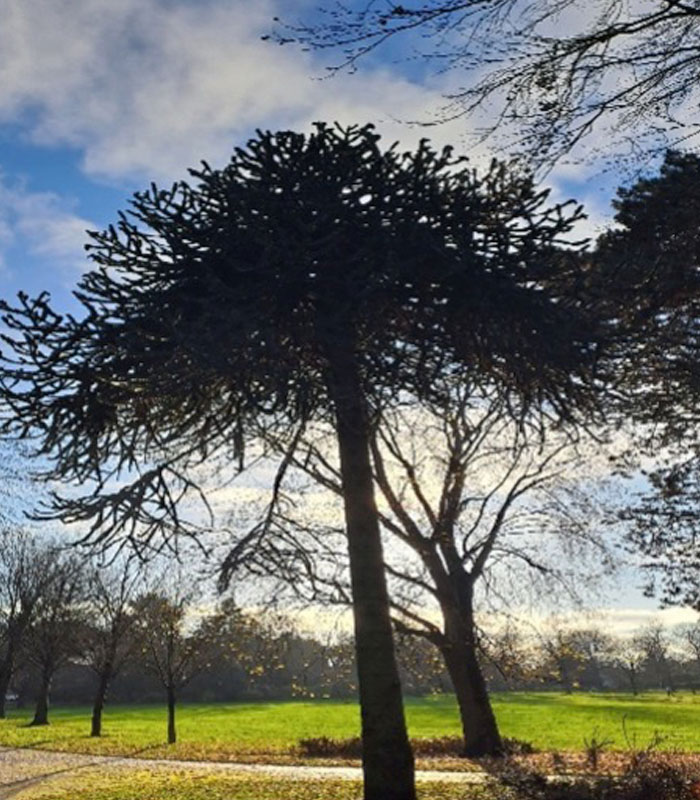
Botanical Name: Araucaria araucana
Common Name: Monkey Puzzle
A native of Chile and Argentina this unusual species was first Introduced to the British Isles in the late 18th Century and has been a popular tree in our parks and gardens since.
Araucaria araucana, commonly known as the monkey puzzle tree, is a unique and ancient coniferous tree native to South America. Here's an overview of its origin and history:
The monkey puzzle tree, with its ancient lineage and distinctive appearance, has left a mark on both the natural landscapes of South America and the cultivated gardens of Europe.
Map
Please see the map below for tree locations and routes around the park.

20675